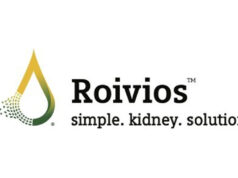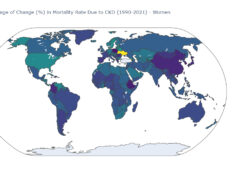 A study recently published in Kidney International Reports (KIR) has found that urinary peptidome (UP) analysis can help predict a patient’s risk of developing kidney failure. It also describes the “potential” for the process to “uncover new pathophysiological chronic kidney disease (CKD) progression pathways”.
A study recently published in Kidney International Reports (KIR) has found that urinary peptidome (UP) analysis can help predict a patient’s risk of developing kidney failure. It also describes the “potential” for the process to “uncover new pathophysiological chronic kidney disease (CKD) progression pathways”.
The study authors, including lead authors Ziad A Massy (Paris West University, Paris, France) and Oriane Lambert (University Versailles-Saint Quentin, Villejeuf, Paris), drew attention first to the existing risk equations for predicting kidney failure, one of which, that devised by Tangri et al, uses urinary albumin-to-creatinine ratio as part of its formula. They argued that previous attempts to assess urinary proteins as biomarkers had demonstrated “inconsistent or still limited findings”. Their study, meanwhile, would compare the performance of a risk equation that also analysed peptides.
In designing the trial, the authors sought to “describe the urinary peptidome diversity” in CKD patients to “better characterise” their patient profile, while also uncovering whether it could “predict their progression to kidney failure.” It was carried out over 40 nephrology clinics across France, examining 1000 adult CKD patients of stages 3–5 from the CKD-REIN study cohort. Fasting blood and second morning urine samples were taken at baseline, and patients were subsequently followed up annually over five years. The primary outcome was kidney failure, which was defined as beginning dialysis or receiving a pre-emptive transplantation.
Machine learning was used in the analysis of the data which was collected. A “clustering algorithm” was used to “classify patients at baseline,” dividing them into three groups of different CKD severity. Then, 5000 peptides were sequenced with peptidome analysis and their abundances were compared with rates of kidney failure. Kidney failure prediction models were than developed based on the results, with sets of predictors including the sequenced peptides as well as other risk factors.
A 90-peptide sequence was discovered which “achieved excellent discrimination in predicting the risk of progression” to kidney failure. However, it did not improve on the predictive capabilities of the kidney failure risk equation provided by Tangri et al. In their discussion, the study authors suggested that “in moderate to advanced CKD, the information contained in the urine peptidome, analysed with an untargeted holistic approach, is redundant with those captured by age, sex” and other variables such as estimated glomerular filtration rate (eGFR). However, they did note that it may in fact be a “good predictor” for CKD itself in patients with type 2 diabetes and normoalbuminuria.
Conceding that the study had limitations, the authors said the study may have been improved by also examining earlier-stage CKD, rather than only looking patients with stage 3–5 disease. Nevertheless, they concluded, the urinary peptidome “appears to represent a useful tool for the detection of new pathophysiological pathways” that are involved in progression to kidney failure, even though its purely predictive capabilities do not outstrip existing risk equations.











